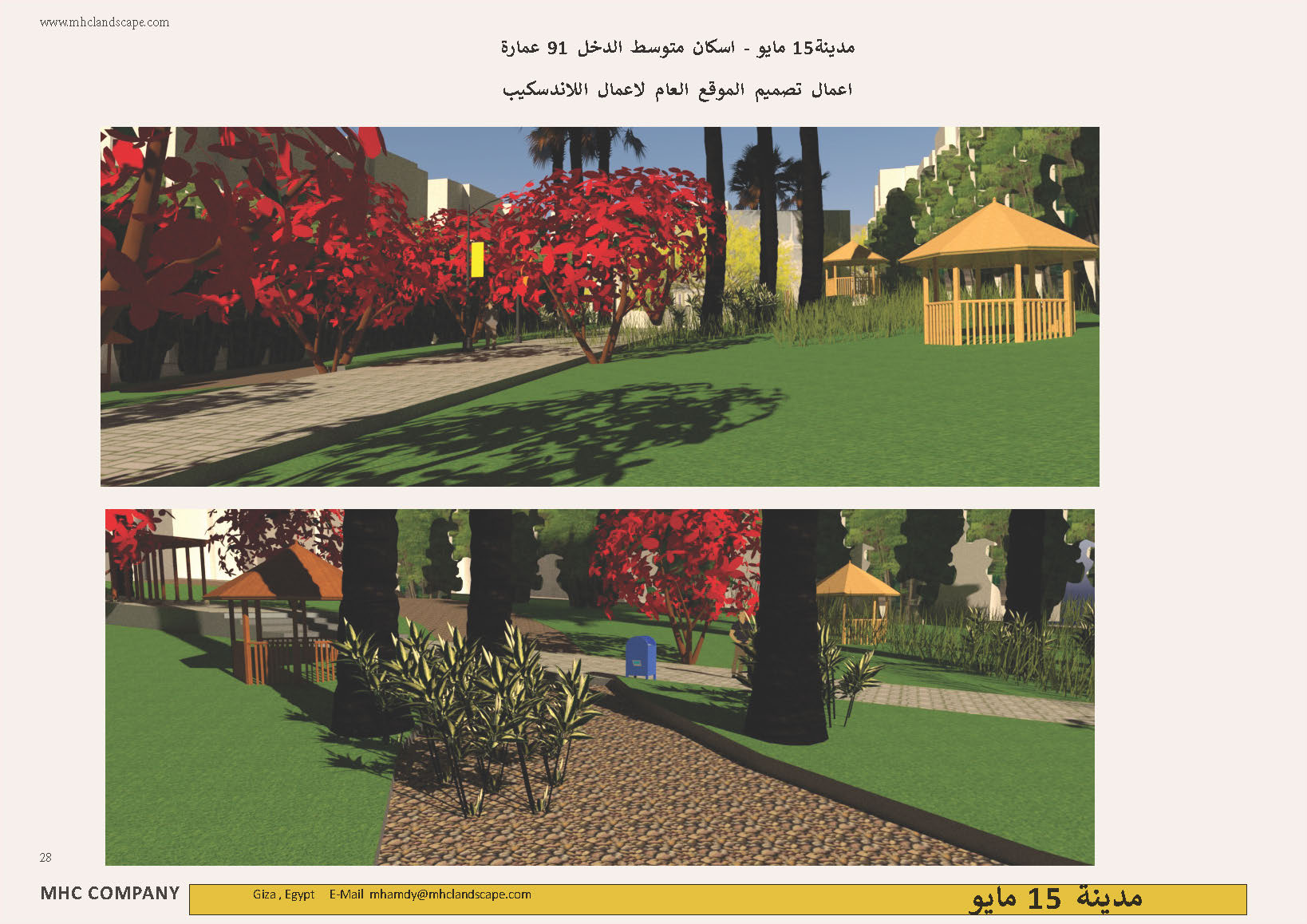landscape green infrastructure 15mayo-Egypt

Green infrastructure refers to the network of natural and semi-natural areas, including parks, green roofs, street trees, and wetlands, that are strategically planned and managed to provide a wide range of ecosystem services. Here are some key uses and applications of green infrastructure:
Uses and Applications
- Stormwater Management:
- Green infrastructure helps manage stormwater by capturing, storing, and infiltrating rainwater, reducing runoff, and preventing flooding.
- Examples: Rain gardens, green roofs, and permeable pavements.
- Air Quality Improvement:
- Vegetation in green infrastructure helps filter air pollutants, improving air quality and providing cleaner air for urban residents.
- Examples: Urban forests, street trees, and green walls.
- Urban Heat Island Mitigation:
- Green infrastructure helps reduce the urban heat island effect by providing shade and cooling through evapotranspiration.
- Examples: Parks, green roofs, and tree-lined streets.
- Biodiversity Enhancement:
- Green infrastructure creates habitats for wildlife, promoting biodiversity and supporting ecosystem health.
- Examples: Wildlife corridors, wetlands, and nature reserves.
- Recreational and Social Spaces:
- Green infrastructure provides spaces for recreation, relaxation, and social interaction, enhancing the quality of life for urban residents.
- Examples: Parks, community gardens, and greenways.
- Climate Change Adaptation:
- Green infrastructure helps communities adapt to climate change by providing natural buffers against extreme weather events.
- Examples: Coastal wetlands, floodplains, and urban forests.
Example Projects
- Hunter's Point South Waterfront Park, New York City:
- This project transformed a former industrial site into a vibrant park with wetlands, green roofs, and recreational areas, providing ecological and social benefits.
- The 606, Chicago:
- This elevated park and trail system connects neighborhoods, providing green space and recreational opportunities while enhancing connectivity and accessibility.
- Green Streets in Portland, Oregon:
- Portland has implemented green streets with bioswales and street trees to manage stormwater and improve urban livability.
Green infrastructure is a cost-effective and sustainable approach to urban planning that provides numerous environmental, social, and economic benefits.

Hunter's Point South Waterfront Park
Overview: Hunter's Point South Waterfront Park is a transformative project in Long Island City, Queens, New York. It turned a former industrial site into a vibrant, sustainable park that provides numerous ecological, social, and economic benefits. The park integrates green infrastructure elements to manage stormwater, enhance biodiversity, and create recreational spaces for the community.Key Features and Applications:
- Stormwater Management:
- The park includes wetlands and bioswales that naturally filter and absorb stormwater, reducing runoff and preventing flooding.
- Green roofs on nearby buildings help capture and manage rainwater.
- Biodiversity Enhancement:
- The wetlands and planted areas provide habitats for various bird species, insects, and other wildlife, promoting biodiversity.
- Native plant species are used to support local ecosystems.
- Recreational Spaces:
- The park offers open lawns, playgrounds, sports fields, and walking trails for recreational activities.
- An esplanade along the waterfront provides scenic views and spaces for relaxation.
- Urban Heat Island Mitigation:
- Extensive green spaces and tree plantings help cool the area, reducing the urban heat island effect.
- Shaded areas provide comfort for visitors during hot weather.
- Community Engagement:
- The park hosts events, programs, and activities that engage the local community and encourage social interaction.
- It serves as a gathering space for residents and visitors, fostering a sense of community.
Impact and Benefits:
- Environmental: The integration of green infrastructure improves water quality, reduces urban heat, and enhances local biodiversity.
- Social: The park provides a beautiful, accessible space for recreation and community activities, improving the quality of life for residents.
- Economic: The park has boosted property values in the surrounding area and attracted businesses, contributing to economic growth.
Hunter's Point South Waterfront Park is an excellent example of how green infrastructure can transform urban areas into resilient, sustainable, and livable spaces.
MHC projects
- Mayo Egypt


